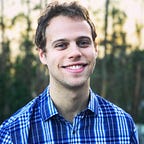Community is the key to Remote Learning
The most vital transition colleges face during the pandemic is not technological. It is communal.
Most colleges are in phase 1 of remote learning: scrambling to bring their school online. Their plans center on a few simple tactics:
- Transition classes online using Zoom video portal (teachers can lecture, break students into smaller groups, use a “chalkboard”, chat, and poll)
- Transition communications to Slack or email
- Maintain Google Calendar as the source of events, video conference links, etc
This transition plan involves simply downloading and orienting to a few apps, aside from issues of budget and internet/tech accessibility.
The more difficult transition is barely mentioned in remote learning strategies: creating community, fun, and connection.
Our plan at Make School specifically focuses on community: by filling students’ emotional needs, schools can enable students to thrive in their tech-enabled classrooms.
So how did we do it? We decided to get a bit creative.
Introducing: Make School of Codecraft and Makery.
Yes … we turned our entire college into a Harry Potter simulation.
Welcome to MakeWarts
And it worked.
Here’s what students said about the simulation:
The magic started with a silly character-driven announcement:
Comedy creates an opening for major community development.
Students studying remotely lack the daily bright spots of fun and affirmation of in-person school. Their world starts to feel closed. Messages from instructors can feel like a bombardment of demands and assignments. World news is disheartening. Family challenges can quickly take over their mental space.
Comedy is the lure out of stress and into community. Our students became eager to login to our school’s platform to see what silly surprise awaits …
We now have student attention and optimism.
Community around Interests: House Themes
Students self-select into one of 5 “houses”, like in Harry Potter. Each house centers around an interest common in our student body: Social Justice, Coding Skills, Gaming, Entrepreneurship, Health & Wellness.
The houses give meaning and reason to convene.
Incentivizing Community: House Points
Most colleges award achievement.
We thought, how can we reward fun, kindness, and community?
We created a point system. Like in Harry Potter, students earn points for their houses by accomplishing community-benefiting tasks:
Each week, rewards are given to the houses with the most earned points. These rewards are sourced from our instructors and staff:
Lisa on staff is point keeper. Here’s her announcement to students:
Creating such a monumental initiative with 160 students is hard. What are some ways to enable it to take off successfully?
Empowering student leadership: Planning Community
Launching school-wide community initiatives are not easy. Colleges risk a spunky announcement followed by failed enthusiasm. We need a fail-proof plan.
Our strategy is best captured in the metaphor building a snowman. Building the large base requires many hands. We need to recruit more and more people to push the growing ball further and further. Without the collective effort, the ball moves nowhere.
Similarly, I recruited a secret team of students to build the base of our Wizarding World snowman. I made a draft plan for the initiative and sent this message out to a few student leaders on campus:
The confidentiality made them feel like a member of a secret launch team. Asking for input made students feel valued. Their input helped me improve the plan. They now had their hand on the snowball.
Next, I sent each of those students a follow up message to recruit their involvement for the long haul …
They were now a co-creator and co-owner the initiative. They were ready to push the snowball with full force. I then helped them foresee the positive impact of their involvement …
Together, we launched the initiative with lots of social validation and excitement!
Over the next few weeks, these recruited students took amazing initiative to evolve this simulation:
Staff members also led contests:
The snowball began rolling on its own.
Return of the phoenix
A phoenix first appears in Harry Potter in the second book. Harry is in Dumbledore’s office and watches the bird burst into flames, startling him. The ashes begin to reignite, and a new baby phoenix emerges from the sparks.
From the ashes of this pandemic, we can find the brilliance within each student. By kindling that spark together, we can travel to a new land, and rediscover the connections and joys of the past.
Thanks to Rebecca Goldman and Ian Birnam for editing the post, and for all the instructors and students at Make School who make the magic happen. Check out this DumbleDan lesson and the Grand Finale to our simulation here.
